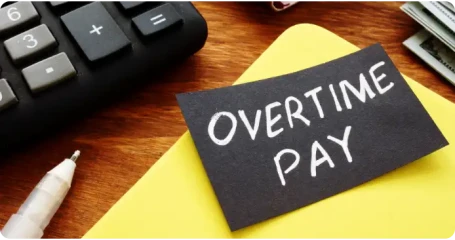Labour cost 101: What percentage of labour should a restaurant be at?
Are you a restaurant owner? If so, you generally know what labour percentage your business should be running at.
One rule of thumb is that restaurants must keep their labour costs at 30%. However, in reality, many businesses vary.
Working at restaurants is like a rite of passage for many young people. And, those who choose to stay in the industry will have favourable careers. From entry-level to top-level positions, there are tons of job opportunities. Yet, how much can you pay for your workers without compromising your business?
Moreover, it's a known fact that labour is one of the highest expenses of a business, irrespective of industry.
What are the restaurant's operating costs?
There are two main factors for costs in restaurants—variable costs and fixed costs.
- Fixed costs - this includes insurance, rent, and other monthly or yearly costs that don't frequently rise and fall.
- Variable costs - this includes costs of goods sold and labour costs. The former is what people pay for food and drink supplies, while the latter is what you're paying for cooks, servers, cashiers, and managers.
You will, in all likelihood, accumulate some start-up costs such as equipment, marketing sources (e.g. website and email marketing), and new tools or software. However, you can't incorporate these costs into your basic operating costs.
What makes up your labour costs?
Your labour cost is the total amount of money your restaurant spends on labour, including employees' salaries, taxes, and benefits.
In addition, the amount you spend on labour may affect your principal costs—total cost of goods sold and labour cost. These are the key metrics in terms of efficiency in many restaurants.
Learning that labour costs may not only include hourly wages might be surprising to new restaurant owners. Here are some particulars that factor into your labour cost computation:
- Hourly employee salary
- Overtime
- Payroll taxes
- Salaried employee wages—can be tricky as salaries technically fall under fixed costs, yet they are also under labour costs.
- Bonuses
- Vacation and sick time-offs
- Health care
Generally, anything labelled "labour-related" will fall into the labour cost percentage computation.
How to compute your restaurant labour cost percentage
There are a few ways you can calculate your labour cost percentage. We will tackle two labour cost calculation formulas: labour as a percentage of overall operating costs and labour as a percentage of sales.
Labour as a percentage of total operating costs
You can calculate your labour cost percentage relative to your total operating costs.
It will help if you determine your restaurant's yearly labour cost, including all expenses your business has to pay your employees all year round.
Next, determine your overall operating costs. It should be the total cost of making business, not just sales, but marketing costs, food, drink, rent, and other disbursements.
You will then divide the labour cost by total operating costs. For example, if your labour cost is $8,000/month, and total operating cost is $10,000/month, divide $8,000 by $10,000 to get 0.8.
Multiply 0.8 by 100; that is the total number of your restaurant's labour cost percentage. It's 80% of your overall cost of doing business. So, if you want to determine your labour cost percentage based on your overall operating costs, use this formula.
Restaurant as a percentage of sales
Your labour cost percentage based on sales is, by far, the most typical formula. Here's how you do it:
First, you must determine your restaurant's labour cost, including all expenses your business needs to pay for your employees all year round.
Check your restaurant's revenue, which in this case is your bottom line—the amount of money your business incurs before paying taxes or any deductions.
You will then divide the labour cost by your yearly revenue. So, for example, if your restaurant paid $200,000/year to your employees and brought in $1,000,000/year in sales, you'll have to divide $200,000 by $1,000,000 to get 0.2.
Multiply 0.2 by 100; that is the total number of your restaurant's labour cost percentage. Based on this example, it is 20%. So, use this formula to get your labour cost percentage based on your gross income.
Restaurant labour costs by the number of hours worked
You can quickly segment your employees into several operation teams (e.g., bartenders, servers, managers, and cashiers) if you calculate your labour costs by the number of hours worked. Quantifying the cost per hour for every team is the main point of this calculation.
For instance, you have five cooks, each working 40hrs/week, and they are getting an average of $20. So to get the restaurant labour costs by hours or work, here's the formula:
Average cost/hour of work = (weekly hours worked by team x average hourly wage) / 52 weeks in a calendar year.
Five cooks x 40 hrs each = 200 weekly hours worked by the team.
200 hrs/week x $20 hourly wage = $4000
$4000 total wages/week / 52 weeks in a calendar year = $76.92
Your restaurant labour costs for the cooks are $76.92/hour worked, and this is after dividing by 52 to get the average in a year.

How do you minimise your labour costs?
If they are skyrocketing, you would want to lessen your labour costs before they start crippling your restaurant. And even if it's thriving, it would help you boost your advertising expenses or costs in new tools if you reduce your labour cost.
More so, here are ways to decrease your labour costs effectively.
Divide your employees into groups
Your employees perform various tasks that fit their job skills and earn different hourly wages. By dividing your workers into groups analogous to their job titles, you can see a massive difference in how much each team costs you.
For instance, you will know your kitchen staff's average cost per shift compared to your servers and hosts.
In terms of cutting costs, you can see which team costs you many expenses. While laying off employees is discouraged, this operation will help you decide which cuts will be effective.
Cross-train your workforce
If your restaurant is a typical one, you likely have some servers, a host, and a limited team for meal preparation. Your manager will supervise operations, deal with customer service issues, and be the contact person for other concerns within your workforce.
The team may only cost 20% during hectic periods versus your revenue. However, an entire shift may cost around 50% of your income on slow mornings. Similarly, you can also train hosts to serve food. Again, this process is feasible if your server does not show up or is on leave.
At that, your manager can take over the host's tasks, thus preventing you from needing more employees.
Implementation of incentives for good performance and attendance
It gravely affects your operating costs if there are no-shows and callouts. You will need to call another employee for coverage when the other employee doesn't show up. This does not only waste your manager's time but also leads to frustration for your employees.
The utilisation of the most suitable technology
Like investing in marketing to increase sales, you should do the same in the right software to optimise operation and productivity. That said, one of the essential systems you need to invest in is good rostering and payroll software from RosterElf.
It is software that'll serve as your cornerstone in managing the labour budget and, at the same time, overseeing employees' work schedules. But, not just that, it does more than that.
Key takeaway
You must know how to compute your labour cost percentage as it is an advantageous long-term tactic in keeping your business thriving. With minimum wages transcending around the globe, being informed and proactive in your labour cost is a vital strategy.
If you want efficient yet budget-friendly software to help you manage your labour budget and rostering, RosterElf is vital.
RosterElf: Rostering made easy
RosterElf's cloud-based rostering and payroll software truly is a game-changer. Say goodbye to roster conflicts and chase employees for their availability to work. Instead, employees can easily update their availability to work and notify managers about it through a smartphone app.
Staff set the times and days they can work, and RosterElf does the rest. Our software then automatically suggests available employees to fill shifts.
What are you waiting for? Time to take your rostering and payroll game to the next level and boost your business' performance.
To get a clearer view of how our app works, enjoy 30-day access to our tool for free!



